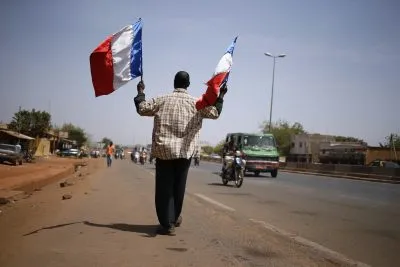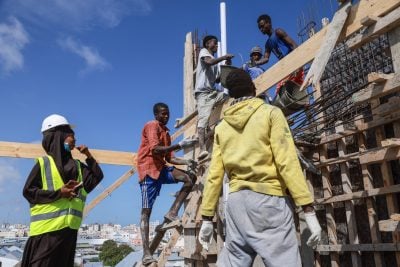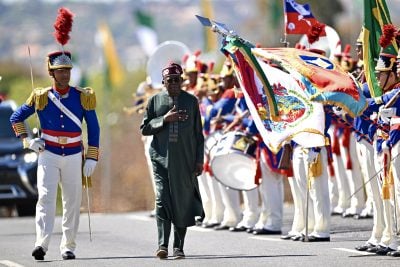In April, leaders from 37 countries massed in Beijing to compete for multi-billion dollar infrastructure deals at China’s second Belt and Road Forum. With its aim of connecting China to the rest of the world via a “belt” of land corridors and a “road” of shipping lanes, Beijing’s Belt and Road project is expected to involve more than $1 trillion in investments.
While the leaders were attracted by the prospect of significant financial support for ports, railroads and highways, the summit came at a time of increasing concern that client countries could be lured into “debt trap” projects that leave them open to punitive renegotiations and, in the worse cases, outright asset confiscation by Chinese lenders.
Global opinion was fiercely divided in the run-up to the summit. While many countries see the Belt and Road as an opportunity to play a key role in an emerging global trade network, others see the scheme as a direct threat to sovereignty and an unhealthy assertion of Chinese power.
In his recent survey of the unfolding project, Belt and Road: A Chinese World Order, Bruno Maçães attempts to summarise the thinking behind the Belt and Road and what its likely consequences and implications will be for China and the rest of the world.
From Southeast Asia to Eastern Europe and Africa, the Belt and Road involves projects in 71 countries, offering unparalleled opportunities to expand Chinese business, diplomacy and cultural influence. As Portugal’s Europe minister from 2013 to 2015 and now a resident of Beijing, Maçães devotes considerable space to the possible impact on Eurasia, arguing that the Belt and Road offers a vision of world politics and trade across the supercontinent that differs radically from what went before.
With the increase in Chinese-dominated trade and financial flows along the Belt and Road, cultural and political influence in Eurasia will inevitably follow, he argues.
“Whoever is able to build the infrastructure linking the two ends of Eurasia will rule the world,” he states.
Yet while China has been wildly ambitious in its conception and early execution of the scheme, Beijing is unlikely to have things all its own way, says Maçães, arguing that China’s great power rivals will also attempt to muscle in.
“If you want to draw an accurate map of Eurasia you need to add the gradual expansion of Indian power from the Suez Canal to Malacca,” Maçães states.
Russia also has claims to occupy the centre and core of the supercontinent, to “provide a bridge between Europe and China”, as Maçães puts it. Japan is financing and building infrastructure across the Indian Ocean all the way to Djibouti. The US is keen to play up fears that the Belt and Road will leave poorer countries nursing heavy debts and a legacy of inappropriate Chinese-funded projects.
Maçães makes clear that this is not a world of clear borders and separations, nor one where different regions converge toward a single model. Yet despite these challenges, Chinese preponderance is almost certain, he argues.
“More than a plan or initiative, the Belt and Road is a movement, representing the slow and ineluctable expansion of Chinese influence,” Maçães states.
Africa’s role
Africa, which finds itself at the geographical edge of the Belt and Road, plays only a small part in this study. There are a number of references to the new Chinese military base in Djibouti (the only Chinese military base outside of the country), but the ballooning trade between China and Africa, which increased by 700% during the 1990s, goes largely unmentioned.
Of course, this is partly because China’s links with Africa are so well documented elsewhere, and the continent has been overshadowed in this study – as it is along the Belt and Road itself – by the dominant role of Eurasia.
Yet dozens of African countries have signed cooperation documents relating to the Belt and Road, and new Chinese-funded ports along the East African seaboard, including Bagamoyo Port in Tanzania, may come to play a major role in the Indian Ocean trade of the Belt and Road.
African policymakers mulling Belt and Road projects may have to look elsewhere for a more detailed overview of how the scheme’s infrastructure plans and financing models relate to their situation.
The book could also do with more insight into the potentially negative environmental impact of such globe-spanning infrastructure projects. In a policy paper earlier this year, the World Bank warned that “the Belt and Road Initiative, due to its diverse and extensive infrastructure investments, poses a wide range of environmental risks. Some projects have easily identifiable and measurable impacts, such as energy projects’ greenhouse gas emissions. Others, such as transportation infrastructure, due to their vast geographic reach, generate more complex and potentially more extensive environmental risks.”
Yet elsewhere, Maçães is clear-eyed about the negative impacts of the Belt and Road – and warns of the notable lack of transparency that it engenders.
“Even in its formative stage the Belt and Road is an exercise in opacity… some of the participants know only the broadest strokes of the plan, sufficient to defend it and to communicate with lower levels, others know nothing and only a few can see months or years in advance. The Belt and Road is like holy writ – never revealed completely and all at once, but only bit by bit and over many decades.”
Yet out of the confusion, Maçães constructs a more optimistic vision of what the Belt and Road could look like at its best. In a series of hopeful predictions, he speaks of the opportunities available to those leaders with the foresight and ability to make the most of the scheme.
“One hundred years after the founding of the People’s Republic, in 2049… the Belt and Road is complete. Some of the infrastructure projects are truly stunning… sea transportation is now entirely conducted by autonomous seafaring freighters… In Africa, a high-speed railway connects the two coasts, traversing Djibouti, Ethiopia, South Sudan, Central African Republic and Cameroon in under 20 hours. Trade between Africa, South Asia and South America increasingly uses this route.”
Such predictions are music to the ears of African policymakers hoping to attract Chinese largesse. But Jonathan Hillman, director of the Reconnecting Asia project at the Center for Strategic and International Studies in Washington, offers a more sceptical perspective for African and global policymakers.
“The Belt and Road is about more than roads, railways, and other hard infrastructure,” he says. “It’s also a vehicle for China to write new rules, establish institutions that reflect Chinese interests, and reshape ‘soft’ infrastructure.”
Want to continue reading? Subscribe today.
You've read all your free articles for this month! Subscribe now to enjoy full access to our content.
Digital Monthly
£8.00 / month
Receive full unlimited access to our articles, opinions, podcasts and more.
Digital Yearly
£70.00 / year
Our best value offer - save £26 and gain access to all of our digital content for an entire year!
 Sign in with Google
Sign in with Google 


